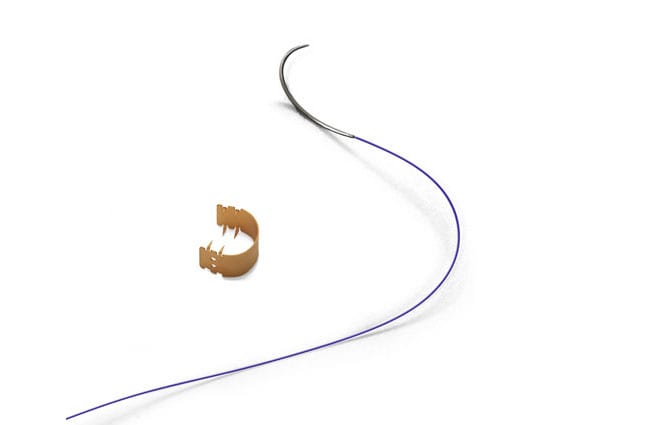
Earfold, ear-stitch and non-surgical ear pinning: key points
Terminology in ear pinning
There are numerous methods to correct prominent ears and choosing the appropriate method can be confusing. Surgery to correct prominent ears is known either as pinnaplasty or otoplasty; both terms are inter-changeable. There are two main otoplasty techniques: the use of stitches to alter cartilage shape or cartilage scoring/weakening.
For most surgeons the use of stitches (stitch otoplasty) is the technique of choice as it is safer and more predictable. It can now be performed under local anaesthetic, without the need for bandages with a relatively short recovery.

The term ear-stitch has recently been introduced. Ear stitch is essentially stitch otoplasty with emphasis on simplicity. It therefore differentiates stitch otoplasty from the more invasive cartilage scoring otoplasty.
The Earfold implant was developed to provide a simple ear pinning alternative procedure avoiding general anaesthetic, bandages and prolonged recovery. However, the stitch otoplasty /ear stitch has also become relatively straightforward so these advantages are not exclusive to the Earfold. This article will help to clarify advantages and disadvantages of the various techniques and help you make an informed choice.
What about non-surgical ear pinning?
There are some websites which promote the earfold as non-surgical pinnaplasty. This is misleading as the earfold is a minimally invasive minor surgical procedure. It requires the use of a minor operating theatre, local anaesthesia and surgical instruments. Like any minor procedure bleeding, bruising and swelling can happen as well as the small risk of infection.
The only non-surgical technique which may be applicable is ear splinting, such as the use of ear buddies. Ear splints work best for misshapen ears and are less successful for prominent ears. They are best applied to a new born baby up to the age of six months as the ear cartilage at this age is extremely soft and pliable and it may be possible to alter its shape without surgery. Such splints need to be applied for a minimum of six weeks. They are effective for ears with abnormal shape but the improvement in protruding ears is partial. In addition, prominent ears are not present at birth in over 50% of cases.
What is Incisionless otoplasty
Another technique which may be perceived as non-surgical ear pinning is incisionless otoplasty. This is also a surgical procedure which aims to insert exactly the same stitches needed in the ear stitch / stitch otoplasty technique without incising the skin by passing the needle and stitch through the skin. This technique has not gained popularity as it can be difficult to position the stitches accurately without visualising the cartilage. This may compromise the result as specific placement of the stitches is necessary. In addition, there can be problems such as stitches protruding through skin and a higher recurrence rate.
Making a decision between earfold or stitch otoplasty (ear stitch)
There are key differences between these two main techniques. The earfold is relatively new and is very effective. Stitch otoplasty / ear-stitch has been around for a long time but now simpler with easier recovery. Every person’s ears and concerns are different. Also, the ear cartilage shape, strength and elasticity are different in all people. Because of this, there simply is no “one-size-fits-all” solution. The correct solution will very much depend on the elasticity and shape of your particular ears.
Pros and cons of the earfold
The earfold is a small implant inserted through an incision on the front of the ear and holds the antihelix in the desired position. You can see the exact position of the ear before any incision is made using the pre-fold. This is exactly the same as the earfold but does not have the sharp teeth needed to penetrate the cartilage. The pre-fold can therefore be applied over the skin to replicate the result.
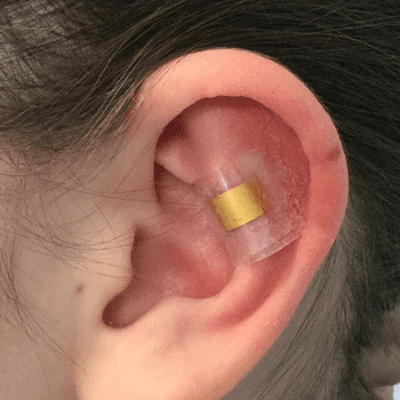
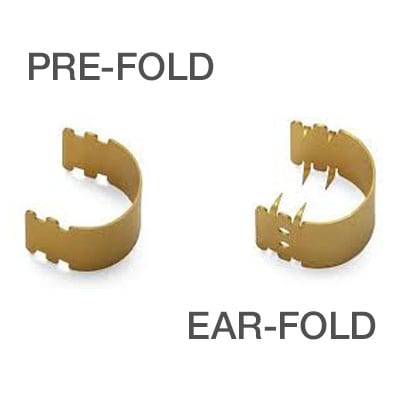
The earfold has a single mechanism of action which is to fold the antihelix of the ear. It is available in only one size, one shape and one strength. This may not give a good result in many ears as the elasticity and strength of the ear cartilage is different from one patient to another. Also, the earfold does not address the problem of enlarged conchal cartilage (bowl of the ear). In view of these factors the earfold is likely to give a good cosmetic outcome in approximately 20% of cases. It is therefore not a true alternative to stitch otoplasty as it is not applicable for many cases.
The earfold has some distinct advantages which are:
- Predictable: you can see the likely result before the procedure
- Quick and minimally invasive with return to work the next day
- Risk of recurrence is extremely low
Although the recovery from the earfold procedure is quick the tenderness associated with the implants can take several weeks to settle very similar to a stitch otoplasty.
The earfold, however, is not fully problem free as often perceived online. Problems associated with the implant are rare but include implant visibility, tenderness, malposition, exposure and fracture. These can occur in 1-3% of patients.
Pros and cons of stitch otoplasty (ear stitch)
The use of stitches to change the shape of the ear was described back in the 1960s. Recently there has been an emphasis to make the procedure safer and simpler with less down time. The use of the term ear stitch reflects this transition. Apart from very young children it is no longer necessary to have a general anaesthetic and almost all can be performed under local anaesthetic. Bandages used to be (and still in some practices) applied for up to 3 weeks. They are no longer deemed necessary and can be removed the next day. The operation itself involves an incision on the back of the ear to gain access to the cartilage and insert the stitches; it is not necessary to remove any skin. The patient is able to see the ear position immediately with a mirror and adjustments can be made if desired.
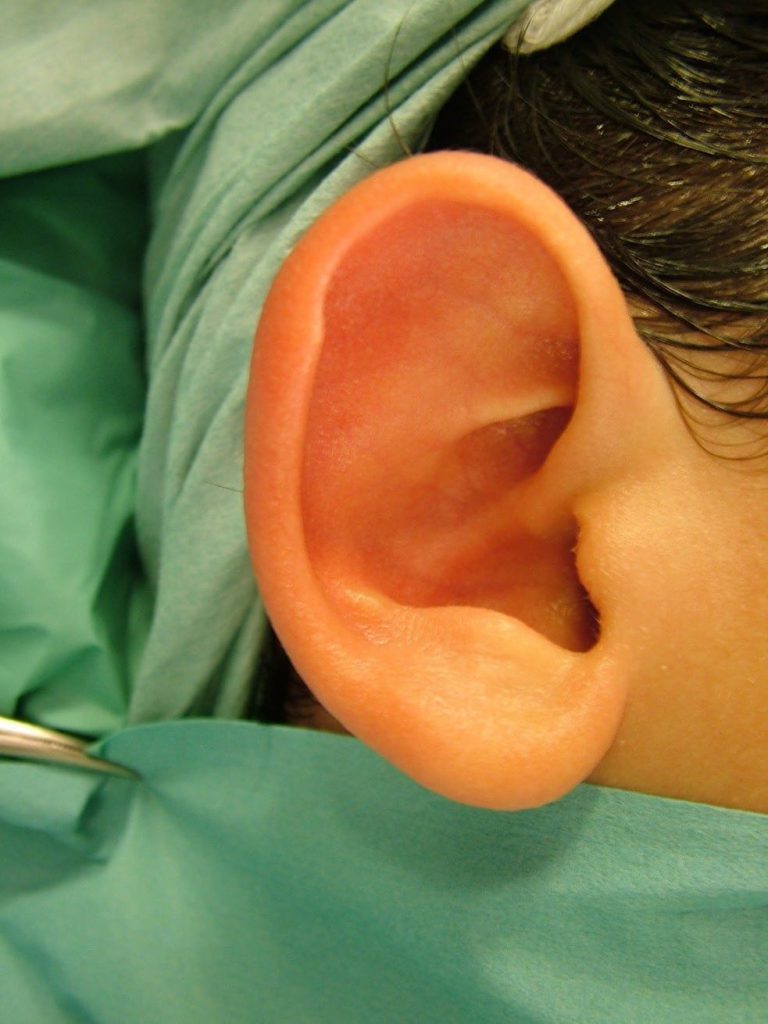
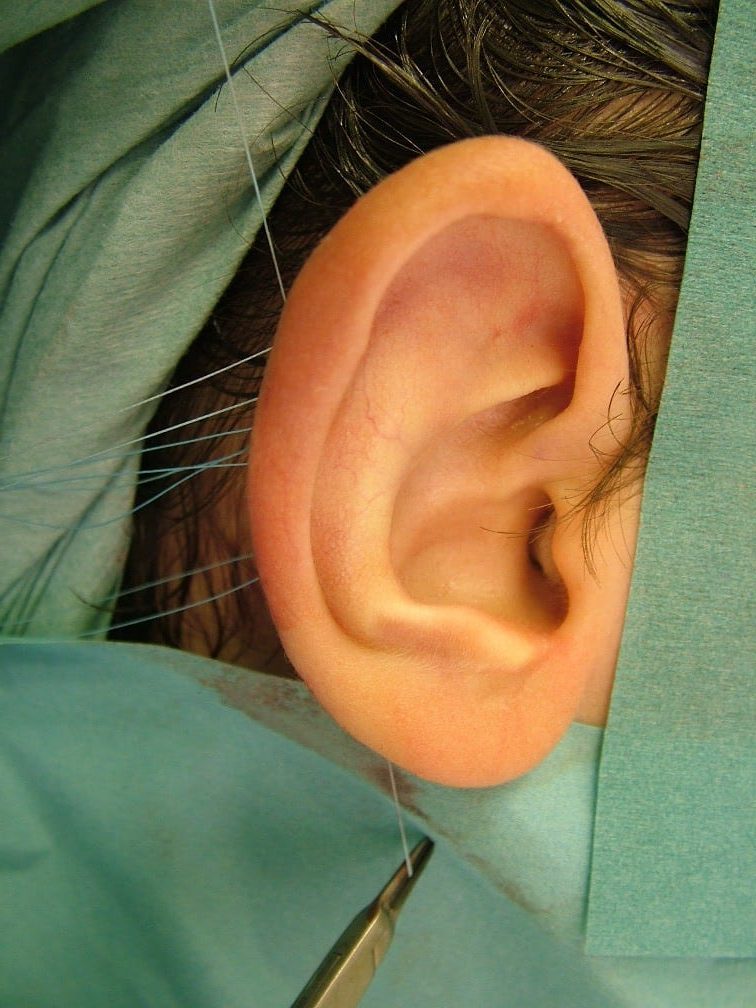
The stitch otoplasty / ear stitch has distinct advantages:
- The main advantage of this technique is the precise control in adjusting the shape of the ear so it is effective for all ear shapes.
- It is very safe with no risk of any serious complications
- The conchal bowl of the ear can be corrected at the same time if needed.
- The incision is hidden behind the ear and patient resume daily activities within days.
The disadvantage of this method is that it takes longer to do than the earfold and a few days longer to recover. Although the exact desired position of the ear can usually be achieved in this technique there may be a minor change (a few millimetres) after complete healing. Actual recurrence is relatively rare, if the technique is performed accurately, and can be relatively easily corrected.
So which technique should you choose?
In reality making a choice between the earfold and stitch otoplasty is not applicable in many cases. In situations where earfold cannot produce a good aesthetic outcome then the only viable surgical option is to use stitches. In the remaining cases where the earfold produces a good result then it should be considered in view of its simplicity and predictability. However, patients must note that earfold implant are not completely problem free long term and these issues should also be discussed.
It is recommended that you see an ear specialist for a consultation as the correct solution will depend on the elasticity and shape of your ear and this requires detailed evaluation of your ear.
Read more about Ear Stitch
Red more about Earfold

Recent Comments